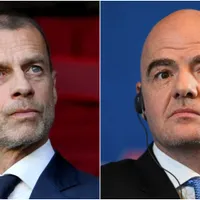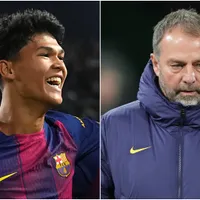This week’s news that the Premier League has sold its three-year domestic television package for a record-shattering $7.7 billion dollars highlighted once again the dominant position the EPL has gained in the global game, which makes Major League Soccer’s most recent record deal look like spare change.
But while the vast economic gulf between the two leagues is stark, MLS is in a position to, in time, become the second truly globalized soccer league in the world.
Commissioner Don Garber has set the date of 2022 as the year when MLS should be among the elite leagues in the world. At first hearing, that date, just seven years away sounds hopelessly optimistic. The choice of year though wasn’t just plucked out of the air. 2022 will be the year when MLS signs its next multi-year television deal and it was also the year that the USA hoped to host the World Cup finals before Qatar won the controversial vote.
I don’t think Garber is far off though with his target – and if we move it back four years, a strong case can be made for MLS being a truly elite league by 2026.
Over the next eight years, MLS will be pushed and marketed to viewers by the two giants of English-language sports television in the US – ESPN and FOX Sports. On top of that, the dominant Spanish language broadcaster, Univision, will be directing its audience actively towards MLS. Eight years of major broadcast network promotion will surely result in an upturn in television ratings. Then, barring a surprise turn in the market, the next MLS television deal in 2022 should see a seriously significant rise in revenue. That will take time to manifest itself in increased competitiveness in the transfer market as MLS clubs look to spend that cash on international talent, but it should have filtered through by 2026.
By 2026 we should also be seeing the fruits of the investments currently being made to turn MLS into a bigger and better league.
In terms of size, MLS by will have grown to 24 and perhaps 28 teams with most of the major cities and regions of the country included.
MLS should also have become a significantly better product on the field. The money being spent on academies and player development at the moment will take several years to deliver tangible results but surely by 2026, MLS will be showcasing the best young American talent to have emerged from a system which is far better designed to find and nurture talent than anything that has existed previously.
That talent will be more likely to stay in MLS and be joined by quality imports because, after two more five-year CBA deals, the salary cap will have been pushed up significantly and (regardless of what happens in this set of negotiations), players will enjoy greater benefits and contractual rights making MLS a much more attractive league for top players.
All the trends point towards further, intensified growth in interest in MLS. Average attendance of over 19,000 is already the envy of most of the established leagues in Europe. With big city clubs like NYCFC, LAFC, Miami and Atlanta, coming on board, all with owners with deep pockets, crowds can reasonably expect to continue to rise. More TV and stadium eyeballs will mean bigger sponsorship deals and increased merchandise revenue.
When it comes to investment in ownership of clubs, we are already seeing two key trends that should intensify growth. Firstly, owners from existing major league American sports franchises are looking to enter MLS. Already there are links with the New England Patriots and Seattle Seahawks while the arrival of the Atlanta Falcons and the Minnesota Vikings could be the start of a wave of NFL teams looking to fill up their stadiums during the spring and summer months. Secondly, the global wealthy who have been so attracted to the EPL are starting to show similar interest in MLS. New York City FC are owned by Sheikh Mansour of the UAE, Orlando City’s majority owner is Brazilian. It would not be a surprise if David Beckham’s Miami ownership group ends up with a strongly international element.
An increasingly globalized, wealthier ownership, with an international selection of players and coaches, doesn’t just give MLS more resources and better soccer – it also, crucially, puts the league in a great position to globalize itself and take advantage of the kind of foreign television rights and merchandising deals that the Premier League has excelled at.
This is the crucial factor. While the EPL is out of reach, it is not fanciful to see MLS in 2026 as the second truly globalized league. A key element is that MLS (like the EPL) is an English-language product, allowing fans around the world to follow the storylines, the arguments, the controversies, the characters and personalities, as well as the action on the field. This is an area where the Bundesliga, Serie A and to a lesser degree La Liga (with its dominant position in Latin America) struggle to compete with the EPL.
That doesn’t mean that MLS would be the second best league in the world in terms of quality or competitiveness. But rather, commercially it has the potential to be truly globalized in a way that few other leagues can be.
Global sports consumers are already used to following American sport from afar thanks to the NBA, MLB and increasingly the NFL. If MLS in 2026 is a serious product on the field, with recognizable names and well established clubs, it would be in a great position to sell itself around the world. It is not by accident that MLS recently announced a new deal with marketing giants IMG to improve the league’s foreign television rights deals.
The final reason why 2026 is, I believe, set to be the year when MLS is transformed is that year the United States stands a very good chance of hosting the World Cup. CONCACAF has a strong case that, with no hosting since 1994, it is long overdue the chance to hold the showcase event. For a host of reasons, the U.S. should beat off any rival bids within the region from Mexico and Canada.
Having the biggest soccer tournament in the world on American soil will obviously give a huge push to an MLS that by then will already have over-taken the NHL as the fourth major league in North America and will be breathing down the neck of MLB.
Thirty two years after FIFA brought the World Cup to the United States in a bid to ‘conquer’ a country that had yet to fully embrace the global game, the task will have been completed. And appropriately America’s full establishment as a major soccer nation would be celebrated on the 250th anniversary of the Declaration of Independence.
Whether this analysis proves to be overly optimistic or surprisingly cautious, the next decade of soccer in America should be fascinating.
Editor’s note: Every Thursday, World Soccer Talk featured columnist Simon Evans shares his thoughts and opinions on world soccer topics. You can follow Simon on Twitter at @sgevans. Plus, read Simon’s other columns for World Soccer Talk.














